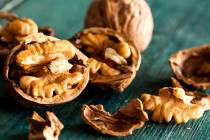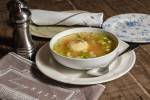ADD ZEST TO NEW YEAR
The year is a week old, which means you've probably forgotten or abandoned all or most of your New Year's resolutions. So, just as a reminder, here are a few dietary resolutions for you:
* Eat more healthfully.
* Eat more interesting foods.
* Eat more fresh fruits and vegetables in season.
* Eat locally (or at least as locally as it's possible to eat when one lives in the desert).
And here's a way to do all four: Include more citrus fruits in your diet.
While some citrus is available at just about any time of year, this is the peak of the season for most varieties, which means "there's no better time than right now to use all the citrus," said Vincent Pouessel, executive chef of Aureole at Mandalay Bay.
And luckily for most of us, Pouessel added, it's "definitely something that requires not too much skill or knowledge, in the sense that you just can simply slice lemon and put it on a piece of fish and put that piece of fish in a steamer or put it in the oven with a little bit of olive oil and some pepper. The flavor of the citrus is going to do the work for you."
So we know citrus can jazz up your foods -- simply, or in more complex ways, if you choose -- but there's a practical reason for using it, too. Mary Wilson, registered dietitian and extension nutrition specialist with the University of Nevada Cooperative Extension, said researchers continue to find more evidence that phytochemicals, or plant chemicals, are beneficial to the body in fighting disease. A recent study in the Journal of the American Medical Association noted that one extra daily serving of fruits and vegetables can cut the risk of stroke by 20 percent.
"Making a simple change like that can really have some dramatic effects on our health," she said. "We've always thought of vitamin C as being the benefit, but there are so many other components to citrus fruits that are helpful to our hearts and bodies."
And while it's possible to get some phytochemicals from supplements, consider that there are more than 175 phytochemicals in orange juice alone, Wilson said. While phytochemicals have been shown to, for example, lower "bad" blood cholesterol and reduce the risk of heart disease, stroke and colon cancer, "the plants are so complex and there's so many different phytochemicals there, it's hard to know if that one by itself lowers cholesterol," or whether the effect comes from the synergy of a combination of the phytochemicals in the fruit, she said.
"As a dietitian, what I always come back to is we're best eating the food, because of the complexity of the nutrients in things like citrus fruit," Wilson said.
The easiest way to get the benefit is to have a half-grapefruit at breakfast, or snack on an orange in the afternoon. But adding citrus to foods increases interest as well as nutritional content.
David Walzog, executive chef of SW Steakhouse at Wynn Las Vegas, suggests using citrus sections in salads.
"You could put in three different kinds, from sweet to tart, where they're like discovery ingredients," Walzog said, "where they add different trajectories of flavor to salads with cheese or goat cheese or something like that. Adding something sweet and sour like a sour orange, or small pieces of lemon or lime that are supertart, that can take a dish in that direction."
Pouessel has diced segments of ruby grapefruit, navel oranges and lime, mixed with herbs, salt and pepper, formed it into a little "packet" and topped it with raw kampachi sliced sashimi-style.
The chefs noted that certain citrus fruits complement some foods better than others -- something that one usually learns through trial and error, said Anthony Amoroso, executive chef at Michael Mina Bellagio. In the case of lamb, he said, "only really a lemon would work." He suggests lime with beef, lemon for fish or chicken. Some foods are a little more amenable to different types of citrus; Amoroso currently is offering a trio of scallops paired with Key lime, white grapefruit and blood orange.
Amoroso said one of the best uses of citrus is to provide balance between acidity and sweetness.
"Citrus makes that easy," he said. "It adds a lot of lightness to foods, makes things seem brighter, pushes the flavor more forward on the palate. Flavors jump more readily." If a sauce seems a little flat, he said, add a few drops of citrus juice "and that'll just about do it."
A good way to use citrus fruits, Amoroso said, is in a preserved state. Use one part salt and a half-part of sugar (for example, 1 pound of salt and 1/2 pound of sugar) and fruit in equal weight (11/2 pounds, following our example). Cut the fruit in half and bury it in the salt-sugar mixture in the smallest container possible, or a bag if you have a vacuum sealer. Add herbs such as thyme or mint and refrigerate it for about a month.
"The rind is pretty much 100 percent usable," Amoroso said. "It takes on a different character -- a more mature citrus flavor, not as acidic. It mellows it."
Preserved citrus, he said, is good in sauces and on fish, in a hollandaise sauce or aioli or with browned butter. Another idea: preserved Key limes, a little red curry paste and some blanched Swiss chard; "fold it all together and let it marinate a few days."
Or use fresh citrus, Pouessel said. "Brown some butter, throw a slice of lemon in it; right there you've got a sauce. Put in some chopped thyme or something and you've got an explosion of flavor right there."
Pouessel suggests peeling lemons, drying the rind, grinding it to a powder and using it to coat tuna before roasting in the oven.
Add zest to anything you don't want to dilute, Amoroso advised.
"Zest in cream really adds fragrance without adding juice and tartness and things like that," Walzog said.
And don't forget dessert.
"On the sweet end of it, I don't think anything can beat a great lemon tart or a lemon curd, classics like Key lime pie," Amoroso said. Pouessel said Aureole pastry chef Megan Romano has made a dark-chocolate souffle with a kumquat liquid center.
"There's clearly nothing you cannot do with any of the citrus," he said.
And, as Wilson notes, "what's the harm of eating citrus?"
Here are some citrus recipes from Sunkist.
CITRUS BAKED CORNISH HENS
Grated peel and juice of 1 lemon
Grated peel of 1 orange
1/4 cup apricot preserves
2 tablespoons grated onion
1 tablespoon butter or margarine
1 tablespoon Dijon mustard
4 Rock Cornish hens (about 11/4 pounds each), thawed if frozen (giblets and necks removed from body cavities)
Lemon wedges for garnish (optional)
Parsley for garnish (optional)
To make the sauce, combine all ingredients except the hens in a small saucepan. Simmer for 5 minutes to blend the flavors and thicken sauce slightly.
Tie the legs of each hen together with string and turn the wing tips under the back. Brush hens with sauce and arrange, breast-side-up, in a 13-by-9-by-2-inch baking dish.
Bake at 350 degrees for an hour or until hens are tender, brushing occasionally with the remaining sauce. Remove string.
Garnish with lemon wedges and parsley sprigs, if desired.
Serves 4.
CAST-IRON-SEAREDJUMBO SCALLOPS WITH BLOOD ORANGE JUS AND BASIL OIL
1 tablespoon cumin seed
1 tablespoon coriander seed
1 tablespoon black peppercorns
1 teaspoon hot paprika
1 teaspoon dry mustard
1 teaspoon brown sugar
1/2 teaspoon lemon zest
11/2 tablespoons kosher salt
12 jumbo scallops
2 tablespoons olive oil
2 cups blood orange juice
1/2 cup carrot juice
12 large basil leaves
1/2 cup extra-virgin olive oil
2 large blood oranges, segmented
In a heavy pan over medium heat, dry-toast the cumin, coriander and black peppercorns for about 2 minutes, until they become aromatic. Remove from heat and cool.
Grind the spices roughly in a spice mill or clean coffee grinder.
Stir into this mixture the paprika, mustard, sugar, lemon zest and salt.
Rinse and pat the scallops dry. Roll them in the spice mixture, so that the scallops are completely coated with the mixture. Drizzle with olive oil.
Using a very hot cast-iron pan, sear the scallops for 2 minutes on each side to caramelize them.
In a small sauce pan, combine the blood-orange juice and the carrot juice. Bring to a simmer and reduce until only 1/2 cup of juice remains and remove from heat.
Using a small food processor, pulverize the basil leaves with a few tablespoons of oil. Finish with remaining oil. Pour into a squeeze bottle for use.
On a large plate, spoon a puddle of blood orange juice in the center. Arrange the blood orange segments and scallops on the plate decoratively.
To finish, drizzle with basil oil.
Serves 4.
CURRIED CHICKEN AND CITRUS SALAD
1 grapefruit, cut in half crosswise
2 cups cubed, cooked chicken breast meat
2 ribs celery, cut into 1/2-inch diagonal slices
1 cup seedless red grapes, cut in half
2 green onions, sliced diagonally
1 orange
2 tablespoons vegetable oil
2 tablespoons honey
1 teaspoon curry powder
Crisp salad greens
With grapefruit knife, cut around each grapefruit section to loosen fruit from membrane; remove. Discard any seeds. Squeeze juice from shells to equal 1/4 cup; reserve. Place grapefruit pieces in large bowl with chicken, celery, grapes and green onions.
Grate peel from 1/2 orange; reserve. Remove remaining orange peel and cut orange into quarter-cartwheel slices; add to grapefruit-chicken mixture.
In small covered container, combine oil, honey, curry powder and reserved grapefruit juice and orange peel. Shake well and pour over chicken-salad mixture. Cover and chill to blend flavors, stirring occasionally. Serve on crisp salad greens.
Serves 4.
Contact reporter Heidi Knapp Rinella at hrinella@reviewjournal.com or 702-383-0474.




























